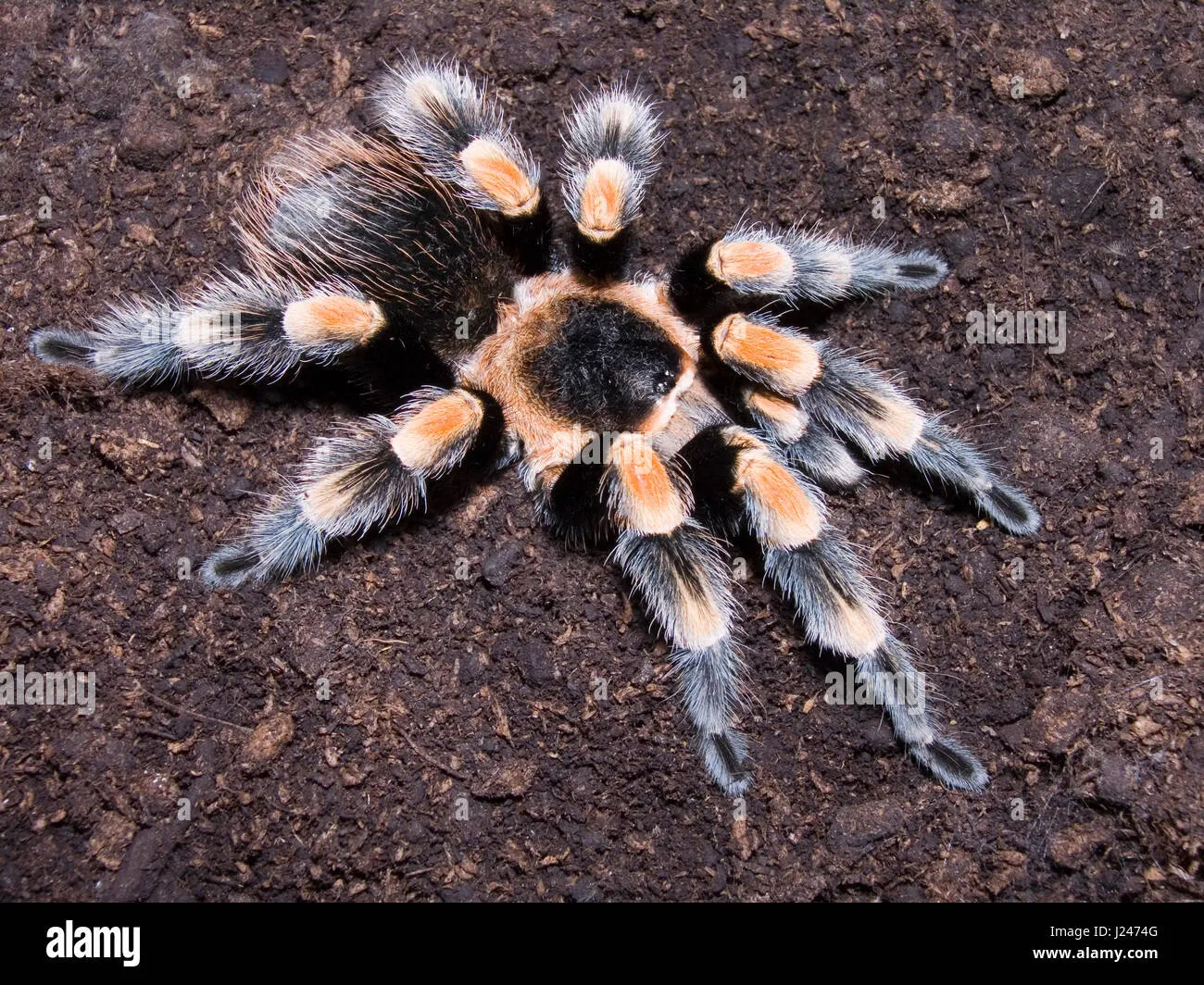Understanding Your Mexican Red Knee Tarantula’s Needs
Caring for a Mexican Red Knee Tarantula (Brachypelma hamorii) can be a rewarding experience, but it’s crucial to understand their specific needs to ensure their health and longevity. This guide will walk you through the essentials of feeding your tarantula, covering everything from dietary requirements to enclosure setup and safety precautions. By following these guidelines, you can provide a comfortable and enriching environment for your eight-legged friend, allowing it to thrive in your care. Remember, responsible pet ownership involves continuous learning and observation, so stay vigilant and adapt your practices as needed to suit your tarantula’s individual needs.
Dietary Requirements
Mexican Red Knee Tarantulas are opportunistic carnivores, meaning they primarily feed on insects. Their diet in the wild consists of whatever they can catch, including crickets, grasshoppers, beetles, and occasionally small lizards or rodents. Replicating this diet in captivity is essential for their health. Providing a varied diet of appropriately sized insects ensures they receive the necessary nutrients to grow and thrive. The size of the prey should correspond to the size of the tarantula; a good rule of thumb is that the prey should be no larger than the tarantula’s body size. Overfeeding and underfeeding are both detrimental, so pay close attention to your tarantula’s feeding habits and adjust accordingly.
What Do They Eat
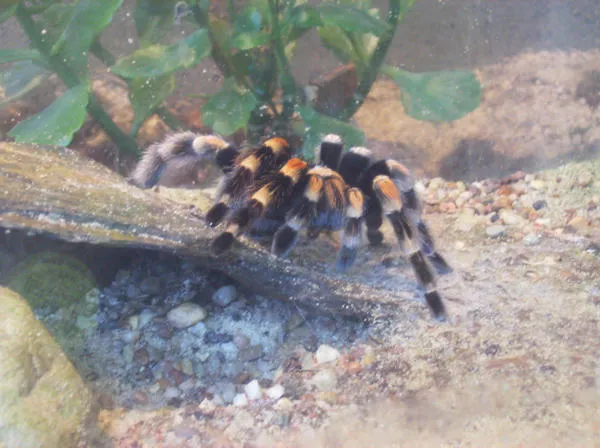
The most common and readily available food sources for Mexican Red Knee Tarantulas are crickets and mealworms. However, offering a variety of insects can improve their nutritional intake. Other options include dubia roaches, grasshoppers, and even small hornworms. Avoid feeding wild-caught insects, as they may carry parasites or pesticides. Ensure that any insects you feed are gut-loaded with nutritious food, such as vegetables and commercial insect food, at least 24 hours before feeding them to your tarantula. This practice enhances the nutritional value of the prey and benefits your tarantula’s overall health and development. Remember to remove any uneaten prey after 24 hours to prevent stress on the tarantula and to maintain a clean enclosure.
Feeding Frequency
Juvenile Mexican Red Knee Tarantulas should be fed more frequently than adults, typically every 3 to 7 days. Adults, due to their slower metabolism, can be fed every 7 to 14 days, or even less frequently. It’s crucial to monitor your tarantula’s abdomen; a healthy tarantula will have a plump abdomen after a meal. If the abdomen is consistently large and bulging, reduce the feeding frequency. Conversely, if the abdomen appears shrunken, you may need to increase the frequency. Always provide fresh water and observe your tarantula’s behavior to determine the optimal feeding schedule. Adjust feeding as the tarantula molts, they typically stop eating before and after molting.
Choosing the Right Food
Selecting appropriate food is crucial for your tarantula’s health. The prey should be the right size, nutritious, and free from any potential contaminants. Choose insects from reputable sources that are raised specifically for feeding reptiles and arachnids. Avoid insects collected from outdoors, as they may carry parasites or be exposed to harmful pesticides. Ensure the insects are gut-loaded before feeding to provide extra nutrients for your tarantula. Remember to remove any uneaten prey to prevent stress on the tarantula and to maintain cleanliness in the enclosure. Providing variety in the diet will contribute to a healthier and more robust tarantula.
Live Prey
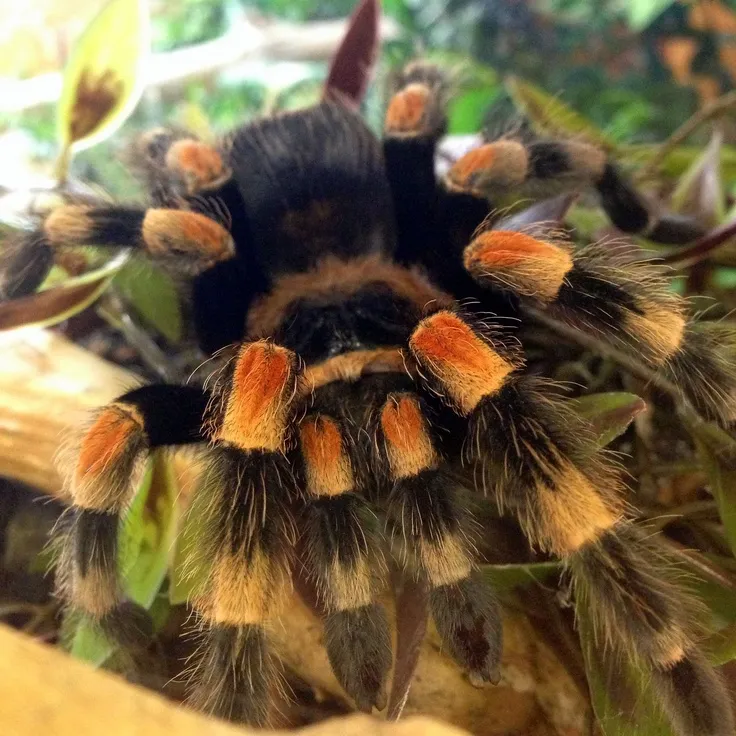
Live prey provides a natural hunting experience for your tarantula, stimulating its natural behaviors. Crickets, mealworms, and roaches are all suitable live prey options. Ensure the insects are properly gut-loaded before feeding. When introducing live prey, observe your tarantula to ensure it catches and consumes the insects. Remove any uneaten prey within 24 hours to prevent stress and potential harm to your tarantula. When introducing live prey, it’s recommended to use tongs or a similar tool to avoid any potential risk of being bitten by the tarantula.
Pre-killed Prey
Pre-killed prey, such as pre-killed crickets or mealworms, is a safe option for feeding your tarantula, especially if you’re uncomfortable with live insects. This method eliminates the risk of the prey biting or injuring your tarantula. Ensure the prey is freshly killed and has been dead for a minimal amount of time before offering it to your tarantula. You can use tongs to offer the pre-killed prey. Some tarantulas may initially be hesitant to accept pre-killed prey, but they usually adapt over time, particularly if they are hungry. This method also allows for more precise control over the amount of food your tarantula receives.
Supplements and Water
While insects provide the bulk of your tarantula’s nutritional needs, a fresh water source is essential. Always provide a shallow water dish filled with clean, fresh water. Change the water regularly to prevent bacterial growth. Avoid using a dish that is too deep, as your tarantula could potentially drown. In terms of supplements, they are generally unnecessary if you’re providing a varied and nutritious diet, including gut-loaded prey. However, if your tarantula shows signs of deficiency or if you are concerned, consult with a veterinarian or experienced tarantula keeper for advice on supplements.
Proper Enclosure Setup
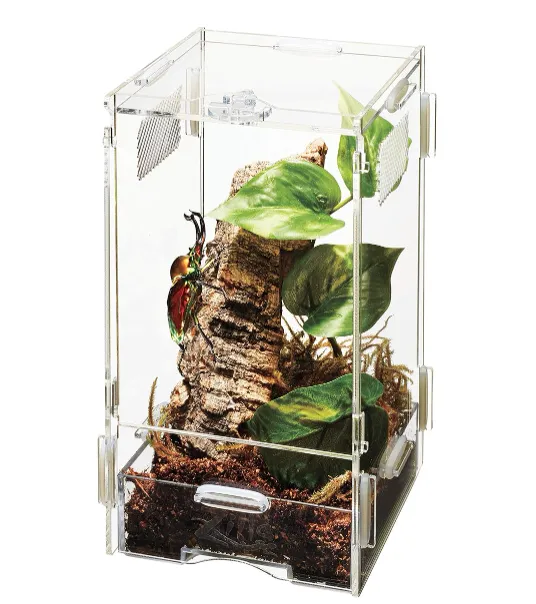
The enclosure setup is crucial for your tarantula’s well-being. This involves providing the right environment, including temperature, humidity, substrate, and hiding places. A well-designed enclosure will help your tarantula thrive and exhibit natural behaviors. The enclosure should be appropriately sized for the tarantula, allowing ample space for movement and exploration. A secure lid is essential to prevent escapes and ensure the safety of your tarantula. Proper ventilation is also important to maintain air quality and prevent mold growth.
Ideal Temperature and Humidity
Mexican Red Knee Tarantulas thrive in temperatures between 75°F and 85°F (24°C and 29°C). Maintaining a consistent temperature is essential, and a heat lamp or under-tank heater may be necessary, especially in cooler climates. Avoid placing the heater directly under the tarantula’s hide to prevent overheating. Humidity levels should be maintained at around 60-70%. You can achieve this by misting the enclosure with a spray bottle once or twice a week, or by providing a water dish. Regularly monitor both temperature and humidity using a reliable thermometer and hygrometer to ensure they are within the optimal range for your tarantula’s health.
Substrate and Hiding Places
The substrate should be deep enough for the tarantula to burrow if it desires, and it should also help maintain humidity levels. A mixture of coconut fiber, peat moss, and a small amount of vermiculite is a good choice. The substrate should be several inches deep to allow for burrowing. Providing hiding places is also essential for your tarantula’s well-being. Cork bark, half logs, or artificial hides provide secure retreats where your tarantula can feel safe and comfortable. Ensure that the hiding places are appropriately sized and positioned within the enclosure. The presence of a hide can reduce stress and encourage the tarantula to come out and explore.
Feeding Techniques
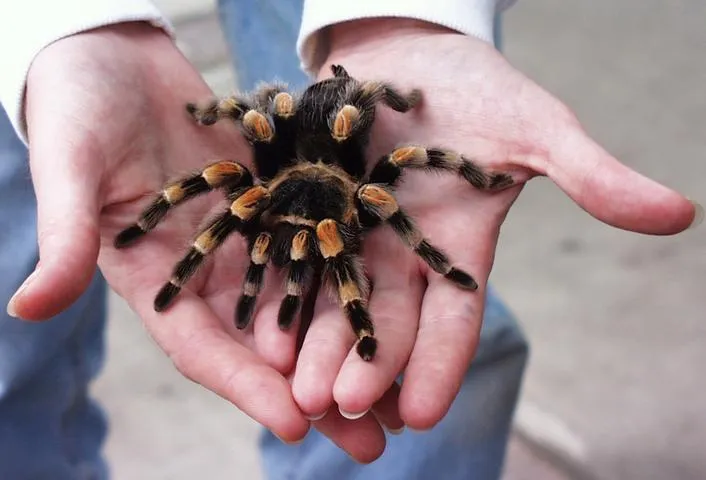
Introducing food to your Mexican Red Knee Tarantula requires careful consideration. Avoid startling your tarantula when introducing food. Instead, gently place the prey near the tarantula. Observe its behavior to determine whether it is interested in eating. It is very important to remove uneaten prey within 24 hours to reduce stress and keep the enclosure clean. This also helps prevent your tarantula from being bothered by live prey. It’s a good practice to offer food in the late afternoon or evening, which is when they are most active.
How to Introduce Food
Gently introduce the prey into the enclosure, placing it near the tarantula. Use tongs or a long pair of tweezers to avoid getting too close to your tarantula. Watch to see if the tarantula displays any interest. Some tarantulas will immediately attack the prey, while others may take a while to warm up to the idea. If the tarantula doesn’t eat, remove the prey after 24 hours and try again in a few days. It’s also wise to avoid disturbing your tarantula during molting, as they will likely not eat during this period. If the tarantula doesn’t eat after a few attempts, check the enclosure setup and ensure that conditions like temperature and humidity are adequate.
Dealing with Refusal to Eat
If your tarantula refuses to eat, there could be several reasons. Check the enclosure’s temperature and humidity, and make sure they are within the optimal range. The tarantula might be in pre-molt, a period when they typically stop eating. Ensure that the size and type of prey are appropriate; sometimes, they may not be interested in specific insects. If the tarantula is still refusing food, consult an experienced tarantula keeper or a veterinarian specializing in exotic animals. They may be able to identify potential health issues or give you additional advice. Never force-feed your tarantula. This can cause serious injury and distress.
Cleaning Up After Feeding
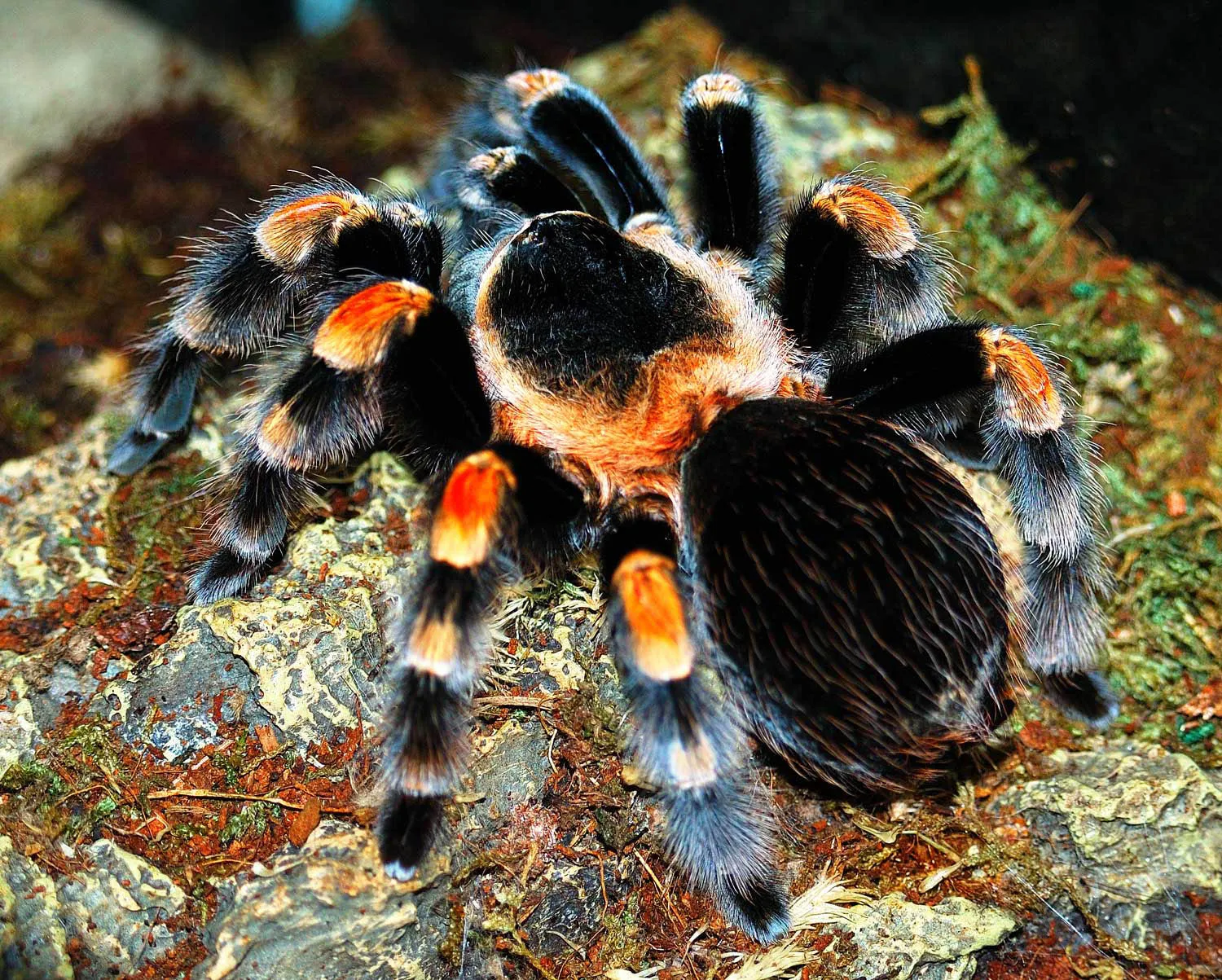
Remove any uneaten prey, exoskeletons, or food remnants within 24 hours after feeding. This prevents mold and bacteria growth and keeps the enclosure clean. Regularly spot-clean the enclosure to remove any waste or debris. Replace the substrate periodically, depending on the size of the enclosure and the tarantula’s waste production. Regular cleaning maintains a healthy environment and prevents potential health problems. Always wash your hands thoroughly after handling the enclosure or any items within.
Common Mistakes to Avoid
Many common mistakes can negatively impact your Mexican Red Knee Tarantula’s health. By avoiding these pitfalls, you can significantly improve the likelihood of providing a long and healthy life for your tarantula. It’s essential to be informed and proactive, monitoring your tarantula’s environment and behavior to prevent these issues.
Overfeeding
Overfeeding can lead to obesity, which can shorten your tarantula’s lifespan. Feed your tarantula according to its age and size, and monitor its abdomen for signs of overfeeding. If the abdomen appears excessively large, reduce the frequency of feeding. Overfeeding is not only unhealthy but can also stress your tarantula. Providing smaller, more frequent meals, especially for juveniles, is a better approach. Keep a record of your feeding schedule and the tarantula’s weight to monitor any changes.
Using the Wrong Prey
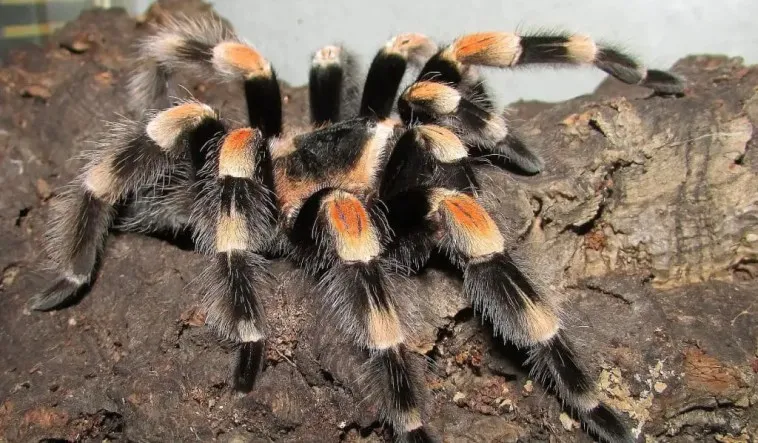
Feeding your tarantula inappropriate prey can cause health problems. Avoid feeding insects that are too large, as they can injure your tarantula. Also, do not feed wild-caught insects, as they can carry parasites and pesticides. Ensure the prey is gut-loaded to provide the most nutrients. It is not recommended to feed your tarantula vertebrates, such as mice or small lizards, unless specifically advised by a reptile veterinarian. The nutritional composition of the prey plays a crucial role in the tarantula’s health and development. Always choose safe, healthy, and age-appropriate prey.
Improper Enclosure Conditions
Maintaining the proper temperature and humidity is essential. Insufficient heating or excessive moisture can cause health problems. Always use a thermometer and hygrometer to monitor conditions, and make adjustments as needed. Ventilation is also essential to prevent mold growth. Ensure that the enclosure has adequate airflow, but don’t allow it to become too dry. Keep the enclosure clean and replace the substrate regularly. Neglecting these aspects can stress your tarantula, leading to illness and discomfort. Creating and maintaining the right environment is vital for your tarantula’s well-being.
Health and Safety
When caring for a Mexican Red Knee Tarantula, it’s essential to consider both your safety and the tarantula’s. Tarantulas can bite, and their venom can cause discomfort in humans. Proper handling techniques and a safe environment minimize the risk of incidents. Additionally, you should be able to recognize any signs of illness or distress in your tarantula. Being prepared helps you ensure a positive experience for both you and your pet.
Handling Your Tarantula
Handling your tarantula is generally not recommended unless necessary, such as for enclosure maintenance or medical care. Tarantulas can be easily stressed and can react defensively, potentially resulting in a bite. If you must handle your tarantula, do so with extreme care. Gently coax the tarantula into a container, and avoid any sudden movements. Always wash your hands thoroughly before and after handling. Ensure that the tarantula is in a secure location before starting any handling. It’s essential to respect the tarantula’s boundaries and prioritize its safety. Some keepers simply choose not to handle their tarantulas, which is an entirely valid and safe approach.
Recognizing Signs of Illness
Learn to recognize signs of illness or stress in your tarantula. Common indicators include loss of appetite, lethargy, unusual behavior, or physical abnormalities. If you notice any changes in your tarantula’s behavior or appearance, consult an experienced keeper or a veterinarian specializing in exotic animals. Observe for signs such as loss of appetite, lack of activity, or any discharge from the mouth or legs. Early detection and intervention can prevent serious health complications. Prompt medical attention is crucial for ensuring your tarantula’s well-being. Also look for any mites on your tarantula.
Feeding your Mexican Red Knee Tarantula is a straightforward process when you understand their needs and provide the right care. By focusing on proper diet, enclosure setup, and recognizing signs of illness, you can ensure your tarantula thrives and lives a long, healthy life. Remember to always prioritize the health and well-being of your pet and enjoy the rewarding experience of caring for these fascinating creatures.
